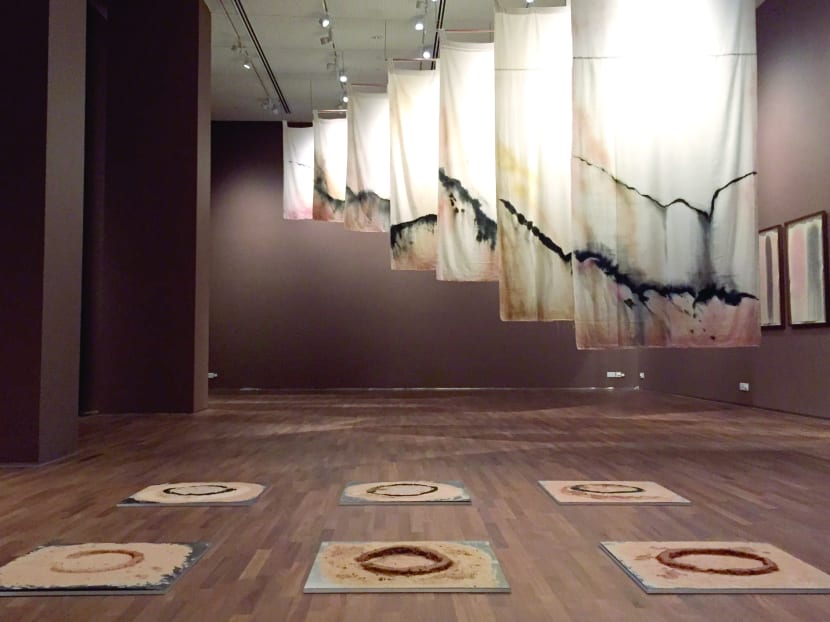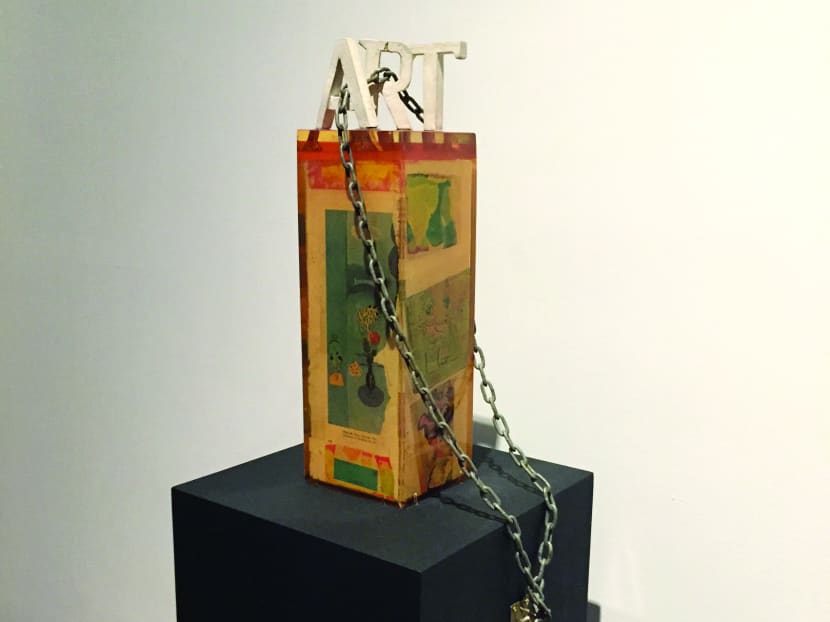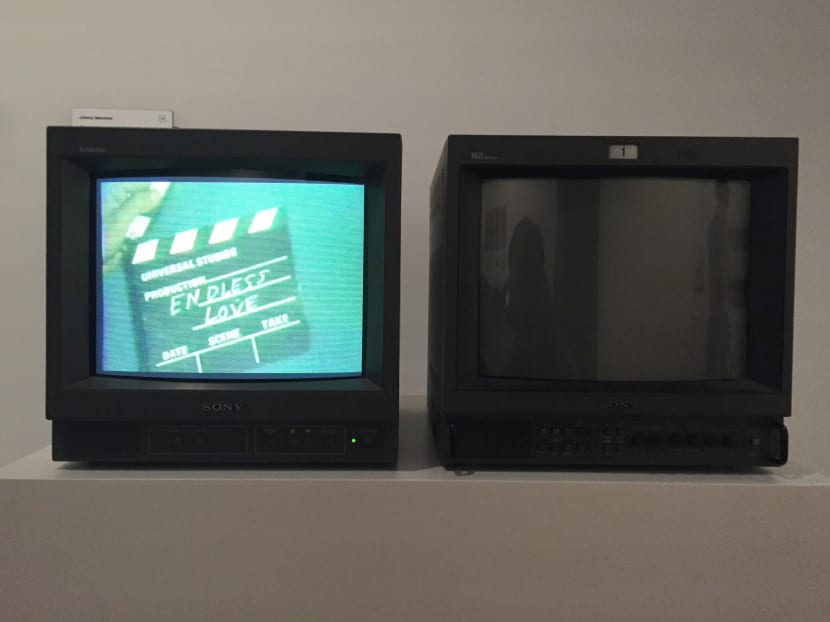Earth, fire and more at National Gallery Singapore’s new shows
SINGAPORE — The year 1988 may be considered a pivotal one for Singapore’s contemporary art scene, with the founding of the seminal arts group The Artists Village (TAV). But in two new exhibitions at National Gallery Singapore’s Concourse Galleries, the spotlight falls on 1979, when a couple of artists were each working on landmark works with an elemental bent — earth and fire.



SINGAPORE — The year 1988 may be considered a pivotal one for Singapore’s contemporary art scene, with the founding of the seminal arts group The Artists Village (TAV). But in two new exhibitions at National Gallery Singapore’s Concourse Galleries, the spotlight falls on 1979, when a couple of artists were each working on landmark works with an elemental bent — earth and fire.
While influential artist Tang Da Wu is known for his performances and work in connection to TAV, in the late 1980s, his new solo show revisits a lesser-known exhibition prior to that.
Earth Work 1979 is a reconstruction of his Earth Work show, which was presented at the defunct National Museum Art Gallery in 1980. Featuring original pieces, reconstructions and documentation of the works, it was, according to curator Charmaine Toh, the earliest recorded instance in Singapore, of land art.
In-between his studies overseas, Tang had returned to Singapore for a year. Intrigued by the textures and forms of gullies that had formed in a field cleared for redevelopment somewhere north of Ang Mo Kio estate, he had proceeded to create a series of works. Among these were the Gully Curtains — seven pieces of cloth were hung over the gullies for three months, just long enough for impressions of the gullies to be imprinted on them. Two other earth-pieces “recorded” the effects of sun and rain on circular mounds of earth, while a series of drawings were also made using earth pigments he had collected from different parts of the country.
The current museum show also includes a series that wasn’t in the original but was made around the same time. It features 64 pieces of cloth that Tang had left on his sister’s roof to record the impact of the sun on the cloth through time.
These works, which utilised the element of chance and touched upon environmental concerns, would eventually point to Tang’s later improvisational and environment-themed performances upon coming back to Singapore in the late 1980s, said Toh. As for the original 1980 show, it proved to be one of the landmark shows in a time when modern, abstract art was in vogue.
Touched upon in the museum’s other show is Malaysia-born Singapore artist Tan Teng-Kee’s outdoor exhibition that same year. Considered equally ground breaking — and equally lesser-known — A Fact Has No Appearance highlights the practices of three unique South-east Asian artists during the 1970s.
While earth was central to the works Tang did in 1979, for Tan, it was fire, specifically a piece called Fire Sculpture, in which he burned down a wooden piece to kick off The Picnic, an exhibition at the field outside his house in Normanton Estate.
The uncanny parallelisms between the artists during that year would continue. Like Tang’s land art moment, The Picnic was another first in Singapore: That of an art happening, performances that were predominant in the contemporary art world from the 1960s. Just as Tang’s land art was a reaction to Singapore’s urbanisation, Tan was creating works linked to such developments, in particular as a sculptor creating public artworks that were eventually seen in malls and public spaces.
The 1970s were certainly a fertile time for Singapore artists — and also their regional counterparts.
Highlighted alongside Tan’s works are those from The Philippines’ Johnny Manahan and the late Redza Piyadasa from Malaysia, from whose work the show’s title is taken.
During the decade, artists in the region were challenging the very idea of art objects and questioning notions of the art market in their practices, which were often conceptual, said Russell Storer, who co-curated the show along with Clarissa Chikiamco and Adele Tan.
While he is known these days as an influential figure in The Philippines’ pop entertainment scene, Manahan is also credited as his country’s pioneering video artist, said Chikiamco. Part of the exhibit is a two-channel video work, which was presented at the Paris Biennale in 1982.
During the 1970s, Filipino artists were treating art-making as something process-oriented, and also on show are Manahan’s photos series, including Evidences, a one-year project comprising self-portraits.
Meanwhile, the works of Piyadasa in this particular show focuses on his works from the mid- to late 1970s and reveals his playful interplay of text and images in paintings and sculptures.
According to Tan, the well-known artist had “built a reputation based on difference”, and the show features cheeky text-based works, such as one where he would appropriate another artist’s painting and paint commentaries over it, highlight and critique a passage from an art review, or simply paint aphorisms such as “This art situation is not to be interpreted visually” on a blank canvas. “He would pose many riddles to the viewer,” said Tan.
Taken together, the two shows “reflect the impact of new art-making in South-east Asia and promise to rewrite our understanding of South-east Asian and Singapore art histories”, said Low Sze Wee, the museum’s director of curatorial and collections.
At the very least, it’s time to re-think our notions of the 1970s — there was certainly more to the decade than disco and bell-bottoms.
Earth Work 1979 and A Fact Has No Appearance open on Jan 22 and runs until May 29 and June 19, respectively, at the National Gallery Singapore’s Concourse Galleries. Free admission. For more info, visit http://www.nationalgallery.sg.







